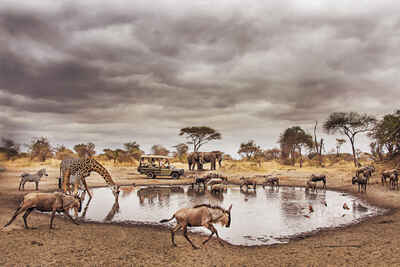About Forest Chem Chem
Forest Chem Chem is a small, high-quality, tented camp in the Chem Chem Concession, which is home to some ...
... fantastic wildlife. With just four luxurious safari tents, Forest Chem Chem can be booked on an exclusive basis for a family or group of friends travelling together.
Forest Chem Chem is perfect for a group of friends or a large family looking for a luxurious camp and a highly personalised safari experience. We were surprised at the abundance of wildlife in the area and the guiding from camp is fantastic. Forest Chem Chem is not cheap, but given quality and exclusivity we think it’s worth it.
Our view
Forest Chem Chem is perfect for a group of friends or a large family looking for a luxurious camp and a highly personalised safari experience. We were surprised at the abundance of wildlife in the area and the guiding from camp is fantastic. Forest Chem Chem is not cheap, but given quality and exclusivity we think it’s worth it.
Accommodation
Four safari tents
Children
Best for 6+
Open
1st June to 31st March
Activities

4WD Safari

Birdwatching

Hot air ballooning

Private activities
Traveller reviews of Forest Chem Chem
1 real, un-edited reviews from Expert Africa's travellers.
Arrived 1 Jul 2024, 3 nights
"Forest Chem Chem review"
Overall rating: Excellent
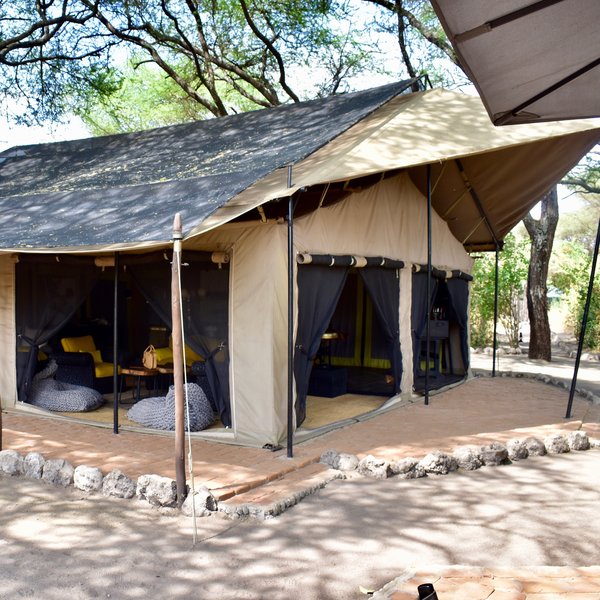
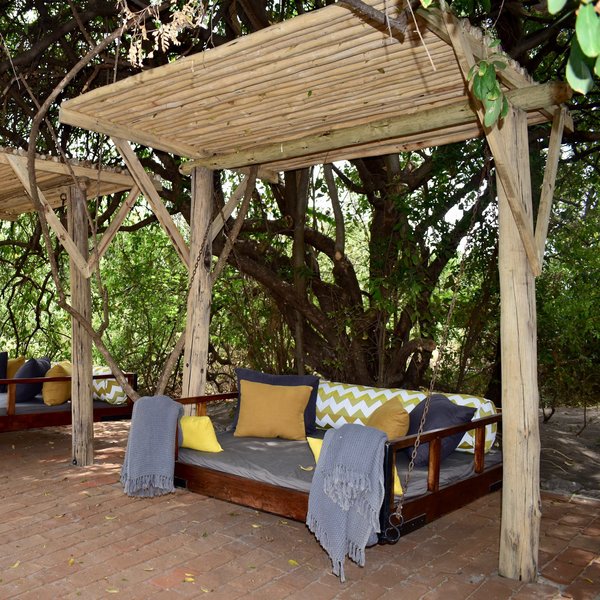
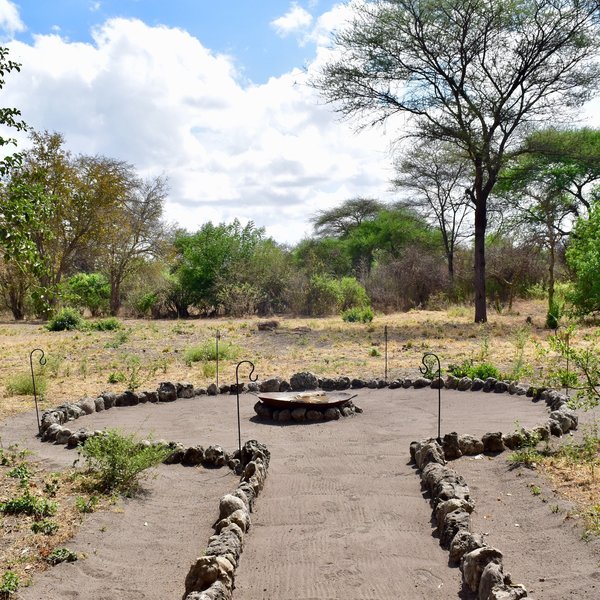
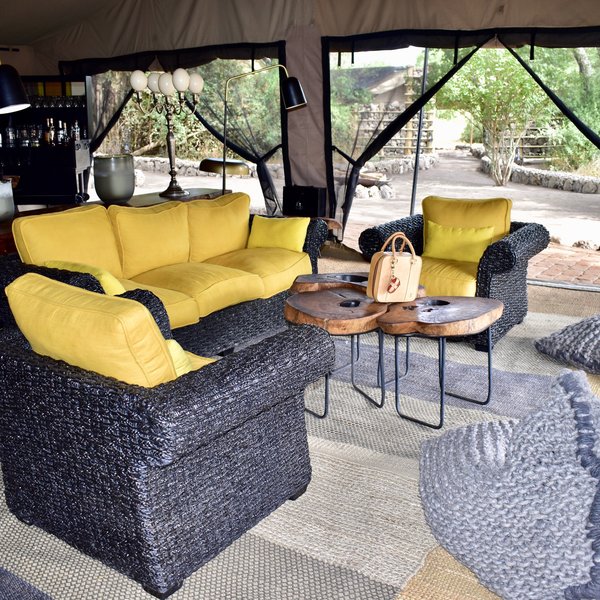
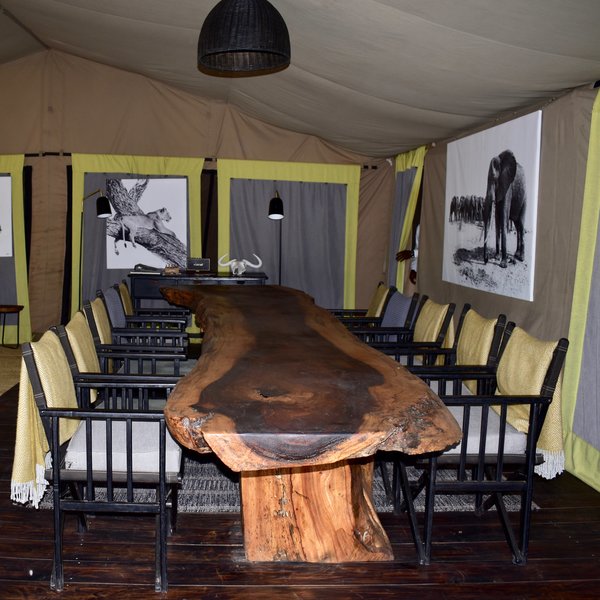
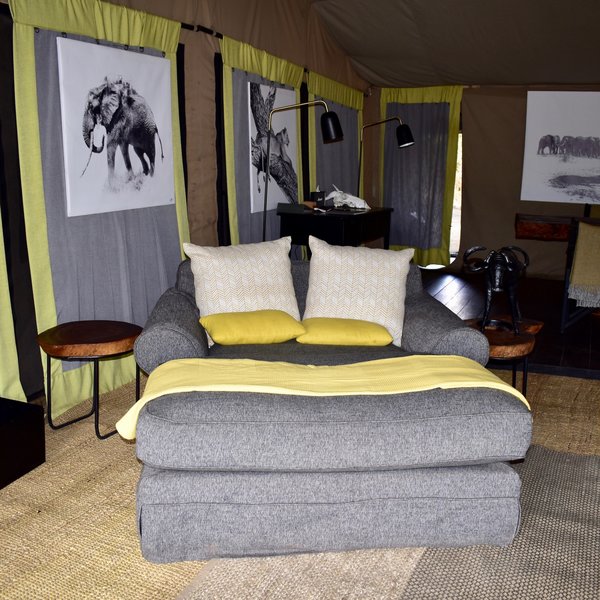
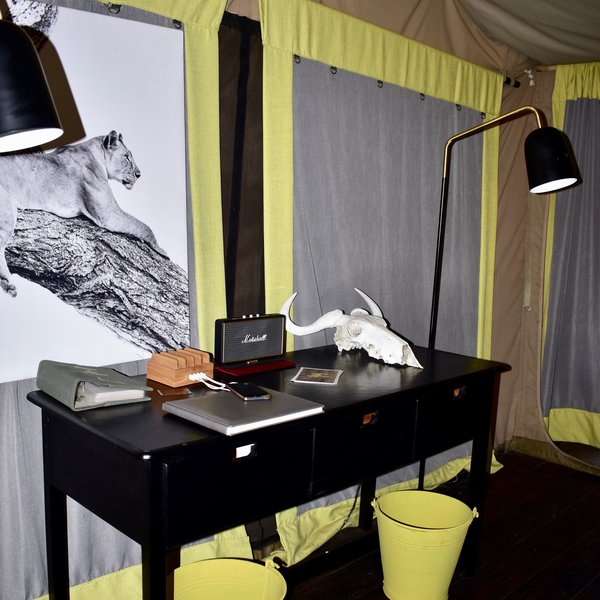
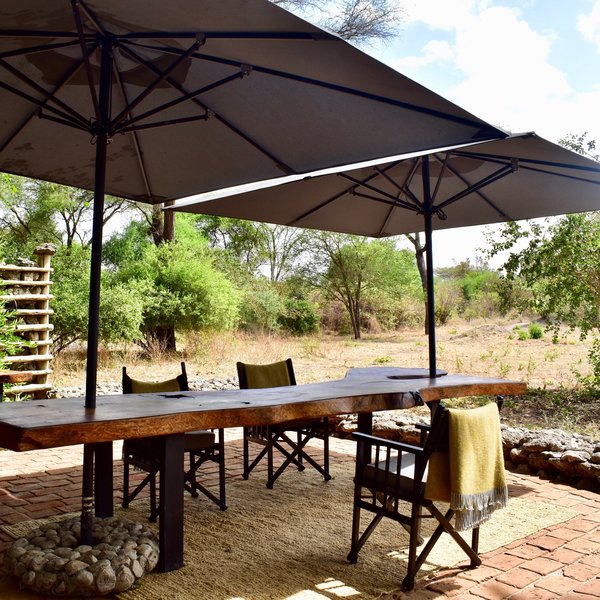
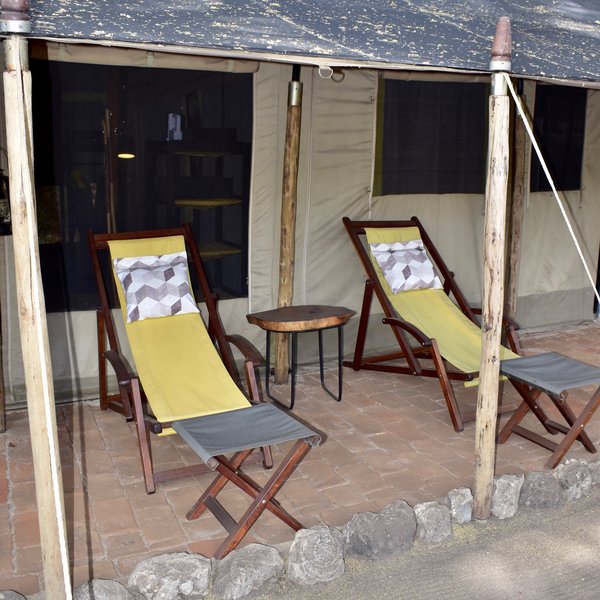
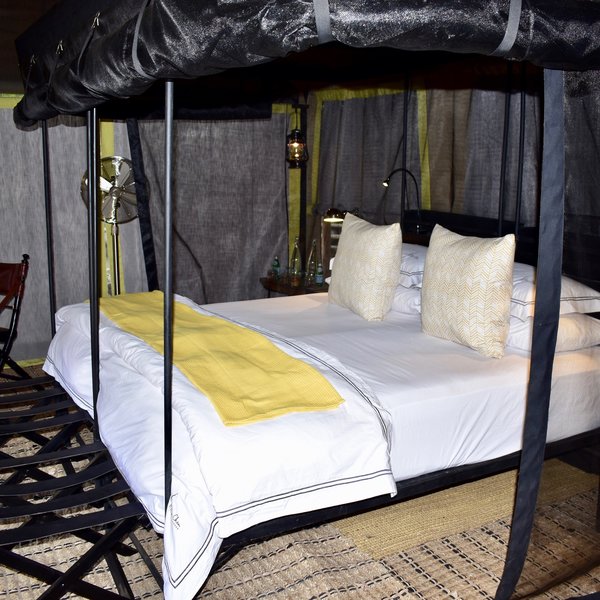
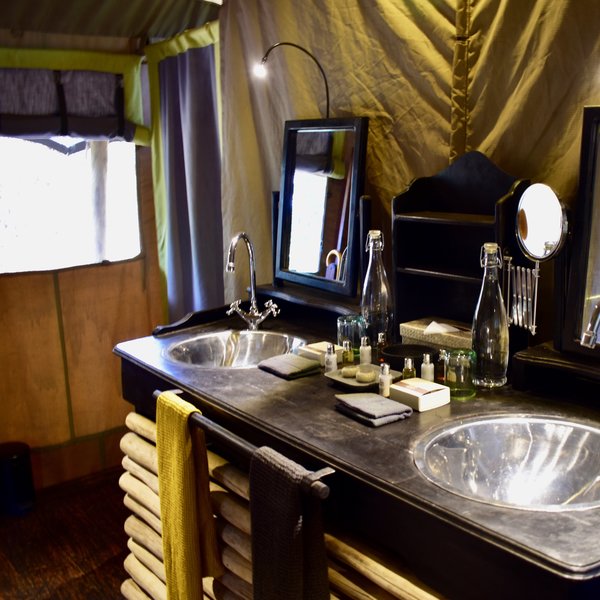
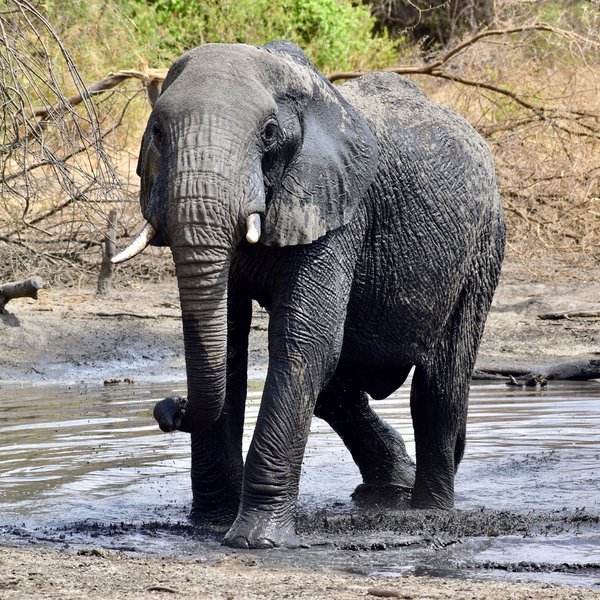
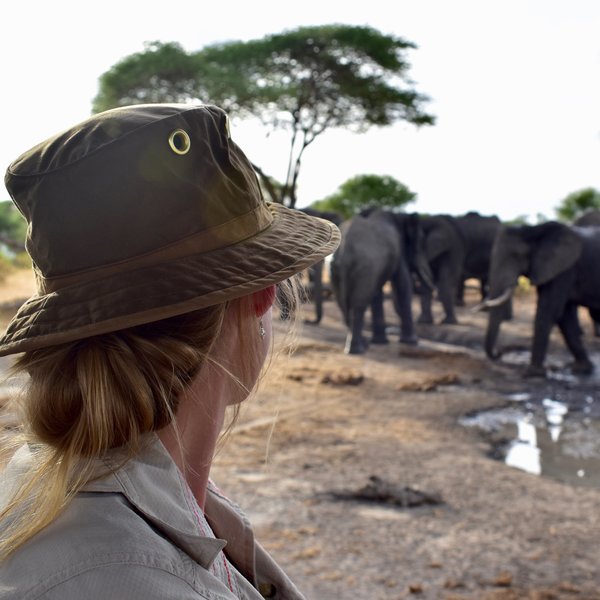
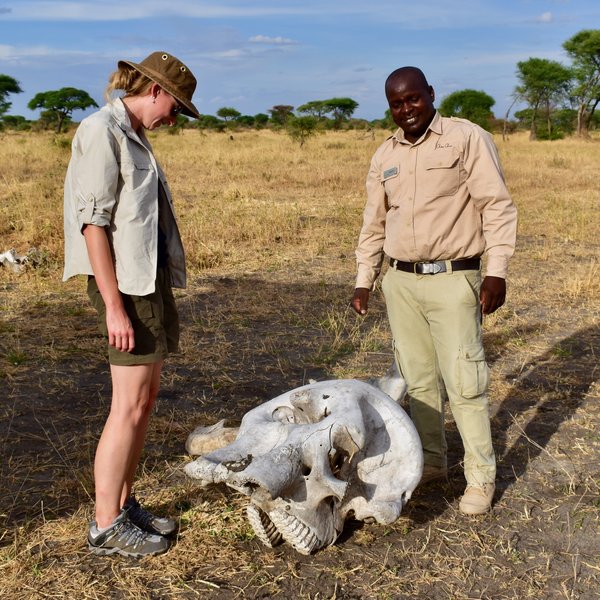
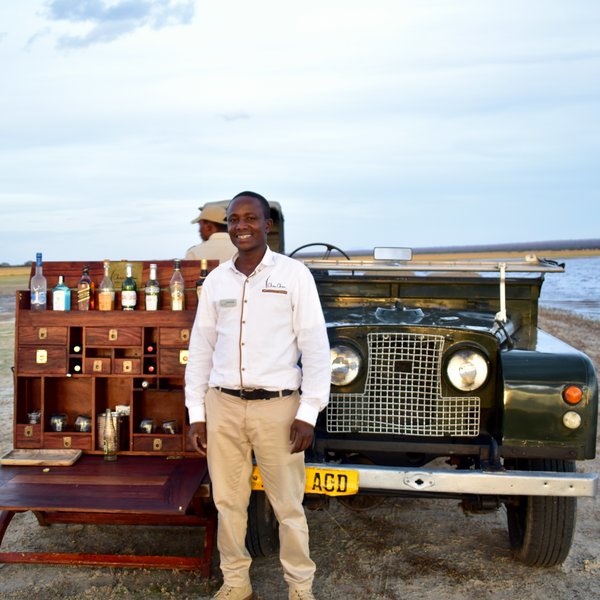
Expert Africa's gallery
When we travel we take lots of photos ourselves to give you a real and un-edited view of the safaris. See our 15 pictures of Forest Chem Chem to get the candid view.
View galleryForest Chem Chem: Our full report
Forest Chem Chem is a small, high-quality, tented camp in the Chem Chem Concession, which is home to some ...
... fantastic wildlife. With just four luxurious safari tents, Forest Chem Chem can be booked on an exclusive basis for a family or group of friends travelling together.
Forest Chem Chem is the sister camp of Chem Chem Lodge and Little Chem Chem. While it operates as a private camp, exclusive to you and your party, it is run to the same high standards as its sister properties,
As the name suggests, the camp is set in an area of open forest in the Chem Chem Concession. It feels quite wild here, with tall acacias lining the sandy pathways, elephants in the bushes and monkeys jumping between the trees. It certainly feels private too, and with only Forest Chem Chem and Little Chem Chem on the concession you are likely to see few other vehicles in the area.
The camp has a distinctive style, very different to any other safari camp we’ve seen in Tanzania, with a colour scheme of black, yellow, gold and grey. It feels very contemporary, although the use of tree trunk tables and natural fabrics helps to create softness, and the camp feels in keeping with its forest surroundings. Add in a pair of pith helmets and some animal skulls and you feel you might have just arrived from a jungle expedition.
There are four stylish safari tents, three of which can accommodate double or twin beds, and one two-bedroom family tent, giving the camp a maximum occupancy of ten people. As with the rest of the camp the tents are decked out in blacks and yellows, with reed mats on the floor, writing desks and plenty of storage space. Outside there is a patio with a couple of deckchairs.
At the back of each tent is an
The main tent functions as a lounge and dining area with a number of black wicker sofas and chunky knit beanbags on one side, and a huge tree trunk dining table on the other. Monochrome wildlife photos hang on the walls and there is always someone around to offer you a drink. A stay at Forest Chem Chem is very much about outdoor living, and there’s a second dining table under two shady parasols. There are also two enormous swing beds suspended from wooden posts.
Of course the main attractions at Forest Chem Chem are its activities. These are all very flexible and arranged around you with your preferred timings. The camp is roughly a 30-minute drive from Tarangire National Park and many visitors will visit the park on a full-day trip. A wide variety of wildlife can be found here, although in recent years it’s also frequently host to plenty of vehicles. But you don’t have to go into the park: the wildlife around Forest Chem Chem is very good, with lion prides and elephants regularly seen while enjoying the exclusivity of this private concession. Other activities include walking safaris and night drives and on our most recent visit we were lucky enough to see a pride of lions feasting on a zebra at dusk.
Activities
4WD Safari
Birdwatching
Hot air ballooning
Private activities
Families & children
- Attitude towards children
- Forest Chem Chem welcomes children over the age of six.
- Property’s age restrictions
- Children must be over the age of six to stay at Forest Chem Chem.
- Special activities & services
- There are no special activities a Forest Chem Chem, however as the camp is booked exclusively there is lots of flexibility. Staff can take children on nature walks around camp, look for animal tracks and make bows and spears
- Equipment
- None
- Generally recommended for children
- We think that Forest Chem Chem is a great choice for larger families with older children.
- Notes
- The camp is unfenced and animals regularly wonder through the area. Younger children will require supervision.
Food & drink
- Usual board basis
- Full Board & Activities
- Food quality
- We didn’t have the opportunity to eat at Forest Chem Chem on our most recent visit, however we’ve previously stayed at both Little Chem Chem and main Chem Chem Lodge and we expect the food at the Forest camp to be of a comparably high standard. The food at these camps has been excellent, with fresh, inventive and very tasty dishes.
- Dining style
- Group Meals
- Dining locations
- Indoor and Outdoor Dining
- Further dining info, including room service
- Room service is available on request.
- Drinks included
- All drinks are included with the exception of premium wines, spirits and champagnes.
Our travellers’ wildlife sightings from Forest Chem Chem
Since mid-2018, many of our travellers who stayed at Forest Chem Chem have kindly recorded their wildlife sightings and shared them with us. The results are below. Click an animal to see more, and here to see more on our methodology.

100% success

100% success

100% success

100% success

100% success

0% success

0% success

0% success

0% success

0% success

0% success

0% success

0% success

0% success

0% success

0% success
Getting there
- Location
- Tarangire National Park, Tanzania
- Ideal length of stay
- Stay three or four nights to explore the area and try the different activities.
- Directions
- Forest Chem Chem is located between the Tarangire and Lake Manyara national parks, about 130km (roughly two hours' drive) from Arusha. It's about a 30-minute drive to Tarangire's main gate, a 90-minute drive to Lake Manyara's north gate and a 2-hour drive to Lake Manyara's south gate.
- Accessible by
- Fly-and-Transfer
Special interests
- Family safaris
- For larger families looking for a luxurious and exclusive safari camp then Forest Chem Chem could be a fantastic choice. All the activities are planned around you by the experienced guides, and they offer lots of flexibility.
- See ideas for Family safaris in Tanzania
Communications
- Power supply notes
- There is a backup generator so power is available 24 hours a day.
- Communications
- WiFi is available throughout.
- TV & radio
- There are no TV’s at Forest Chem Chem.
- Water supply
- Borehole
- Water supply notes
- Bathrooms are fully plumbed and there are flush toilets.
Health & safety
- Malarial protection recommended
- Yes
- Medical care
- All managers are first-aid trained and there is a first-aid kit on site. The nearest doctor is two hours away in Karatu.
- Dangerous animals
- High Risk
- Security measures
- The camp is guarded by askaris 24 hours a day and the concession is patrolled by armed anti-poaching teams.
- Fire safety
- All staff are trained in fire safety and there are extinguishers throughout camp.
Useful info
- Disabled access
- Not Possible
- Laundry facilities
- Laundry is included, hand-washed and line dried.
- Money
- There is a safe in each room.
- Accepted payment on location
- The camp accepts Visa and MasterCard without charge. US dollars, British pounds, euros and Tanzanian shillings are also accepted in cash.
Plan and book your trip with Expert Africa
All of our trips are tailor-made, so we'll always adapt them to suit you. Talk to an Expert and let us plan and arrange your perfect trip.

Talk to an Expert
Call or email us now! We’ll match you with the Specialist in our team who is best suited to help you. Then together we can start planning your trip.

Set up your itinerary
Based on our experience and your ideas, your specialist will create a detailed, costed itinerary. We’ll refine it together, until we have a trip that you’re perfectly happy with.

Prepare for your trip
The same Specialist will make the seamless arrangements for your trip, send you detailed travel documents, and be available to answer any questions before you depart.

Travel with peace of mind
After you set off, you’ll be cared for by our partners in Africa, most of whom have worked with Expert Africa for decades. And if you ever need us urgently, we’re available 24/7.

When you return
We love to learn about your trip, and so will always be grateful if you’ve the time to give feedback to your Specialist when you return.
Forest Chem Chem's location
Look closer at the environment and surroundings of Forest Chem Chem.
Excursions from Forest Chem Chem
Optional extra day-trips and excursions possible whilst you're staying at Forest Chem Chem. Talk to us: these are usually best arranged before you go.
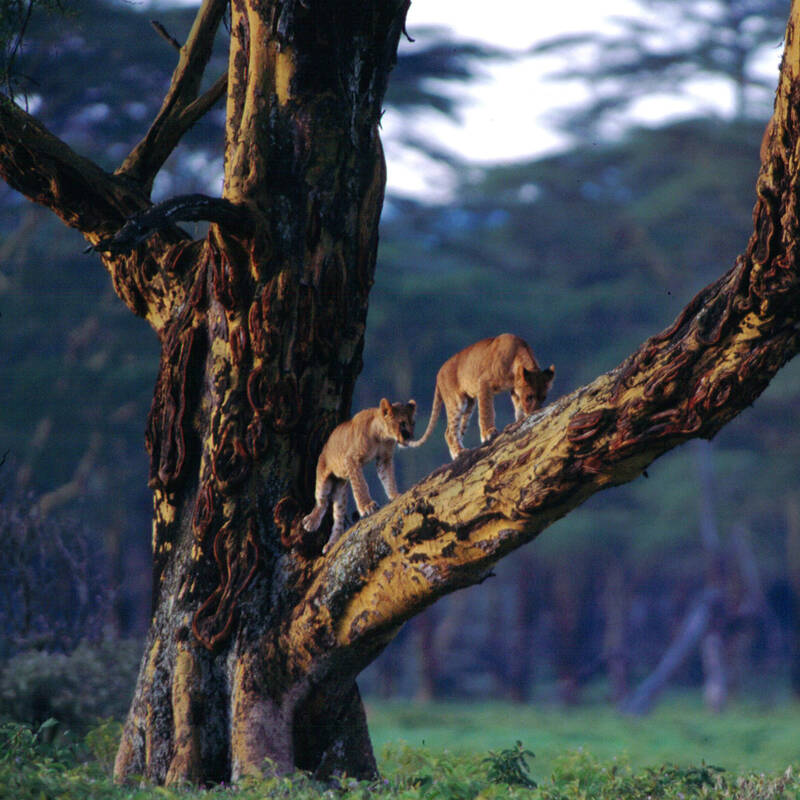
Lake Manyara Safari
Half-day or full-day
Set against the spectacular backdrop of the Rift Valley escarpment, Lake Manyara National Park makes a great safari destination. Here, along with elephant herds and plains game, you’ll find jungle-like forests that are home to blue monkeys, a soda lake tinged pink by flamingos and some of Tanzania’s best birding.
More about Lake Manyara Safari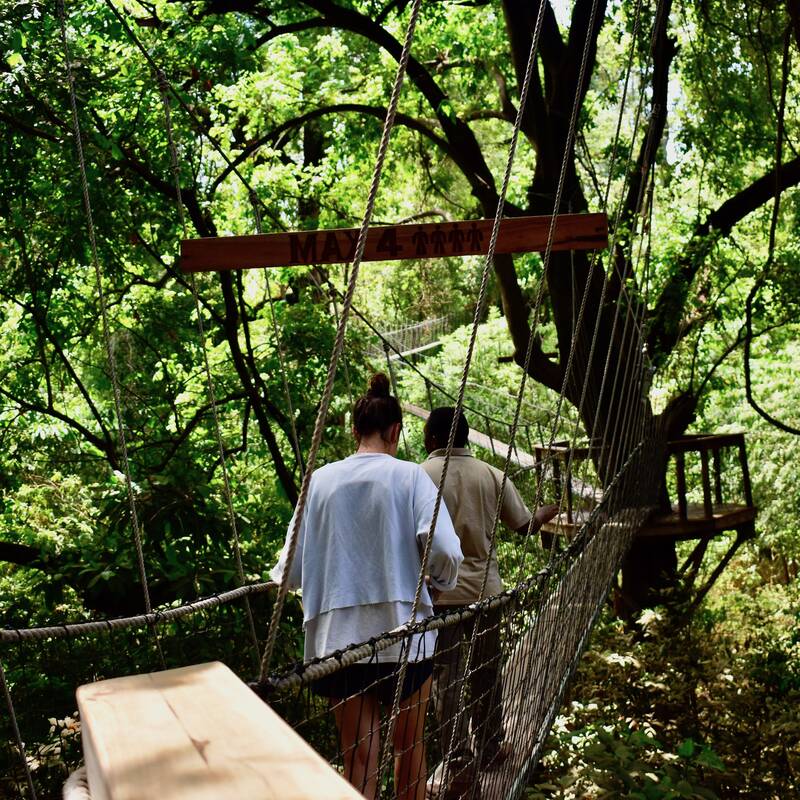
Lake Manyara Treetop Walkway
Usually one hour
Experience the forest of Lake Manyara National Park from a whole new perspective – high up in the trees. The first suspended walkway in Tanzania, it stretches underneath the canopy for 370m between the mahogany and fig trees, giving intrepid visitors a unique view of the surrounding flora and fauna.
More about Manyara Treetop WalkOther lodges in Tarangire National Park
Alternative places to stay in this same area.
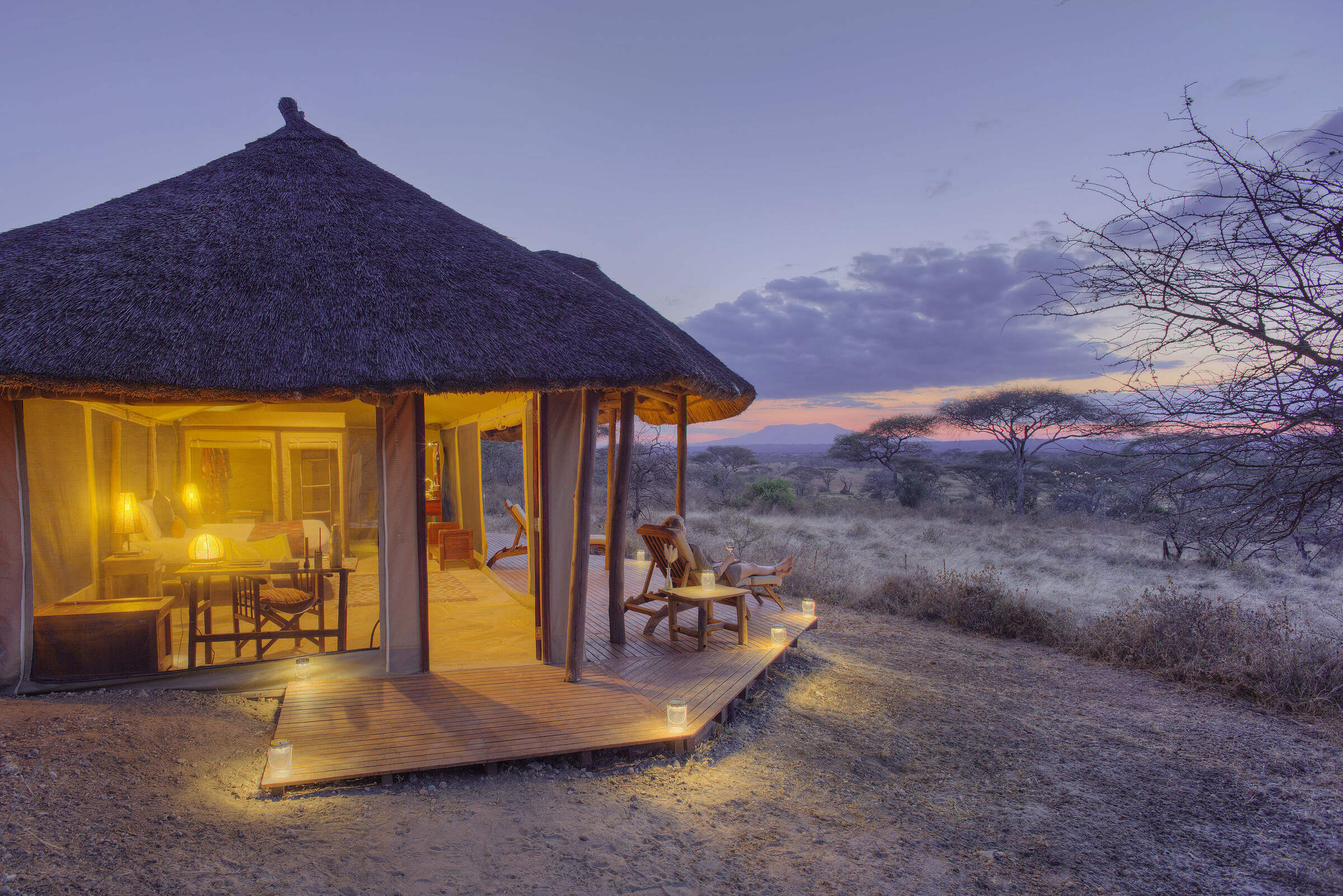
Oliver's Camp
Oliver's Camp is a small, intimate, luxury tented camp in a great location in northern Tanzania's Tarangire National Park.
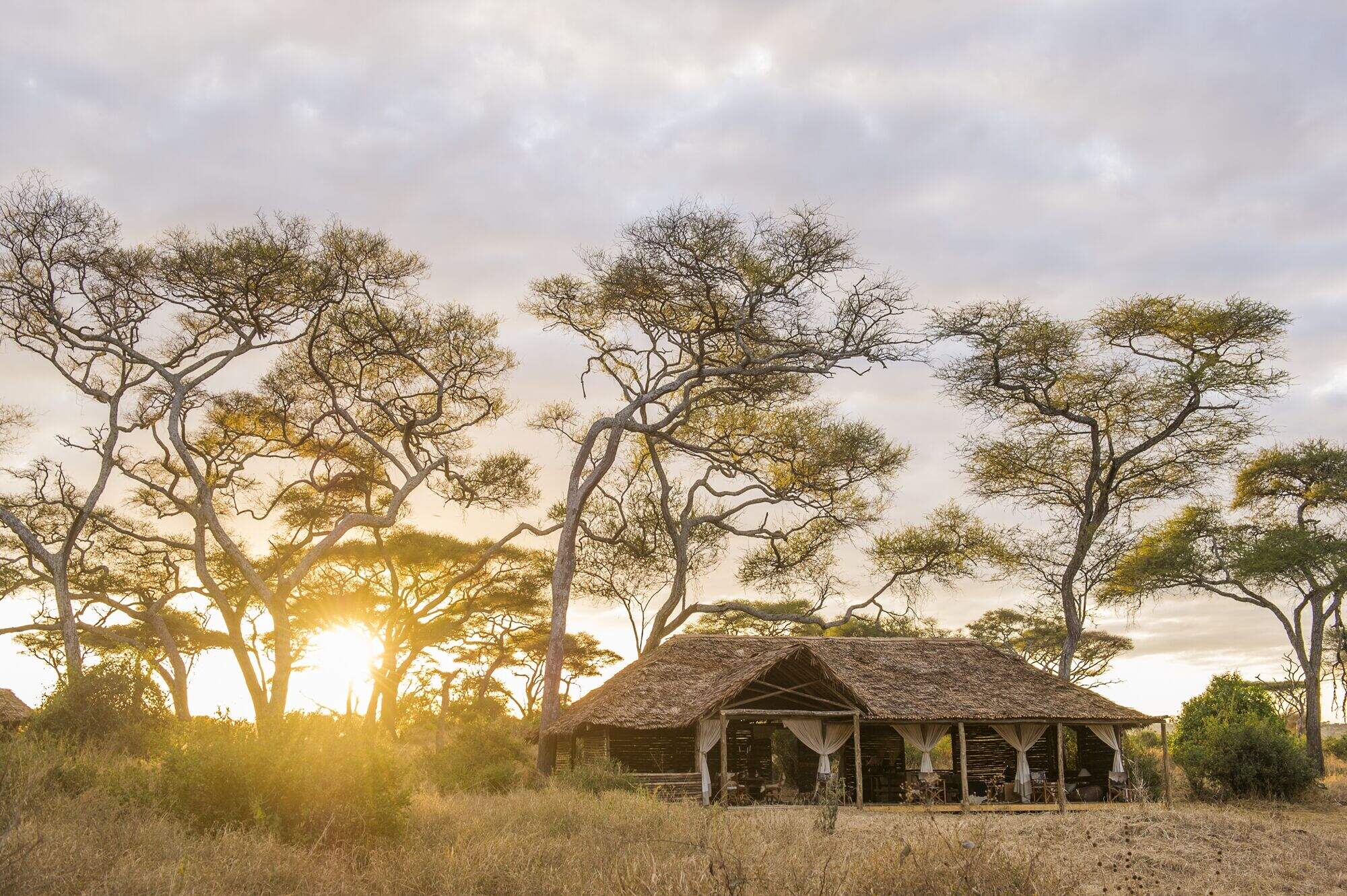
Kuro Tarangire
Kuro Tarangire is a stylish tented camp, located in a quiet and remote area deep in Tarangire National Park.
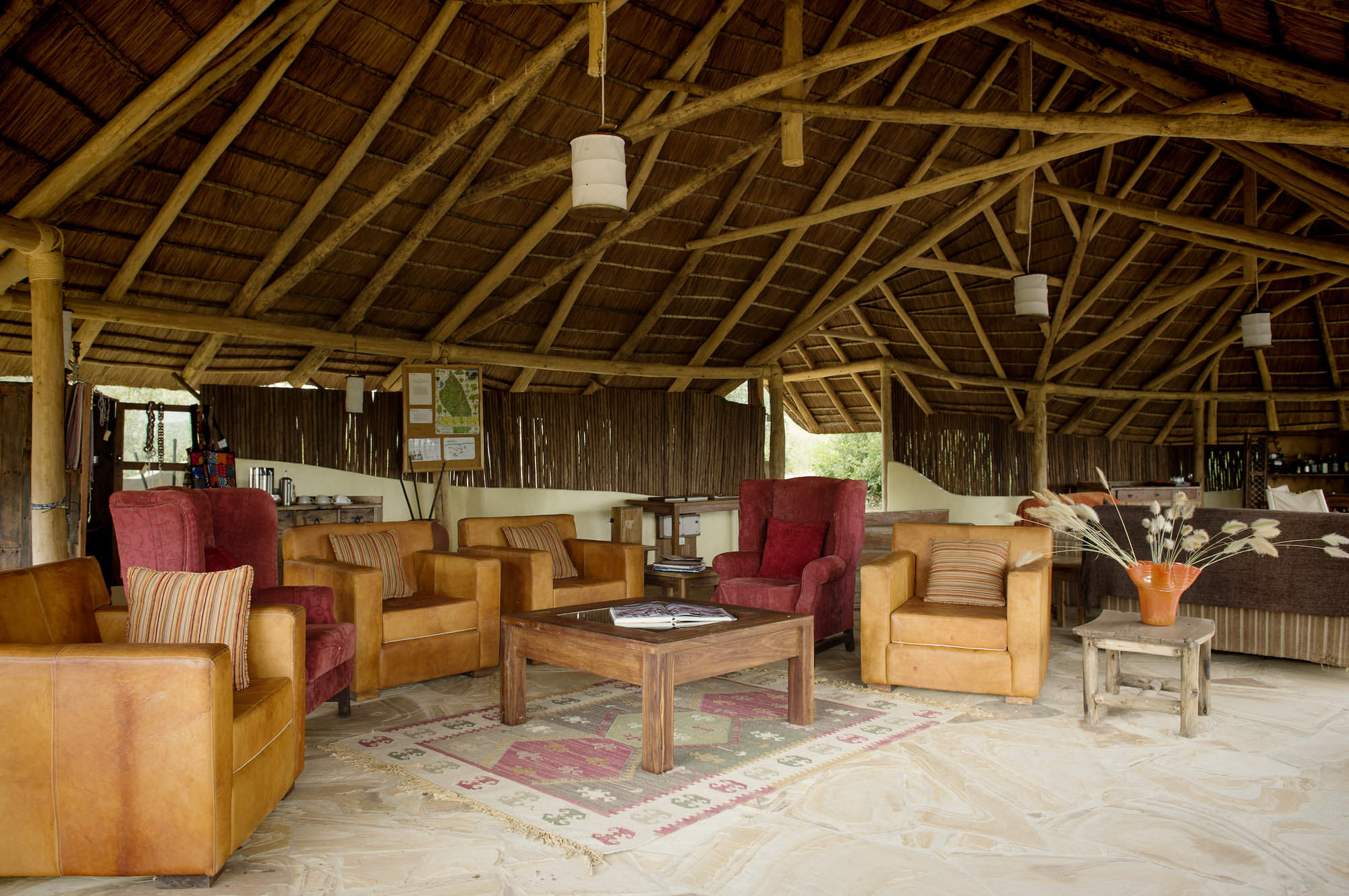
Little Oliver's
For a more private version of its sister property, Oliver’s Camp, Little Oliver’s offers high-quality guiding and tented rooms.
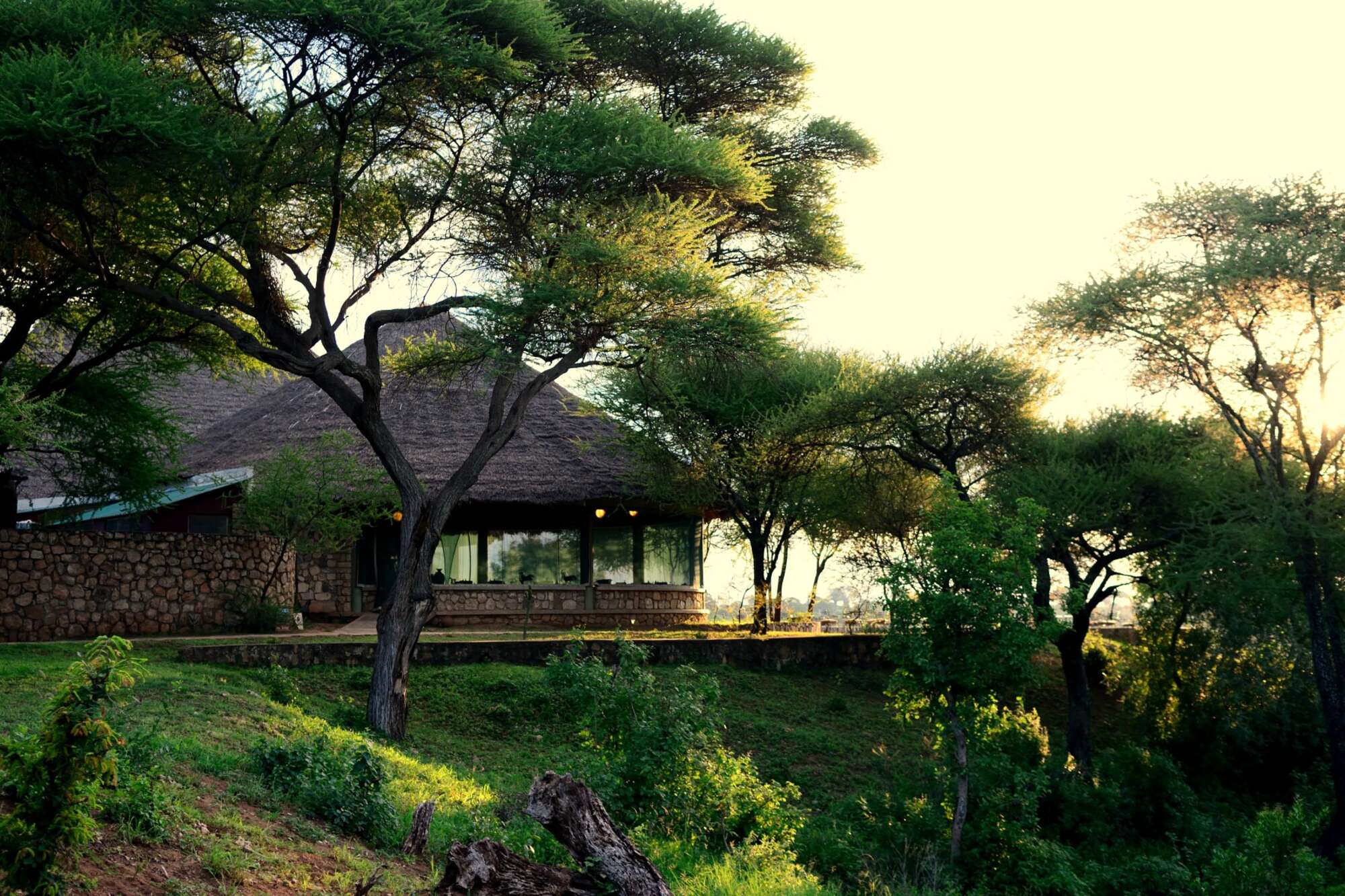
Tarangire Safari
Functional Tarangire Safari Lodge is one of Tarangire National Park's larger lodges, on a prime central site overlooking the river.
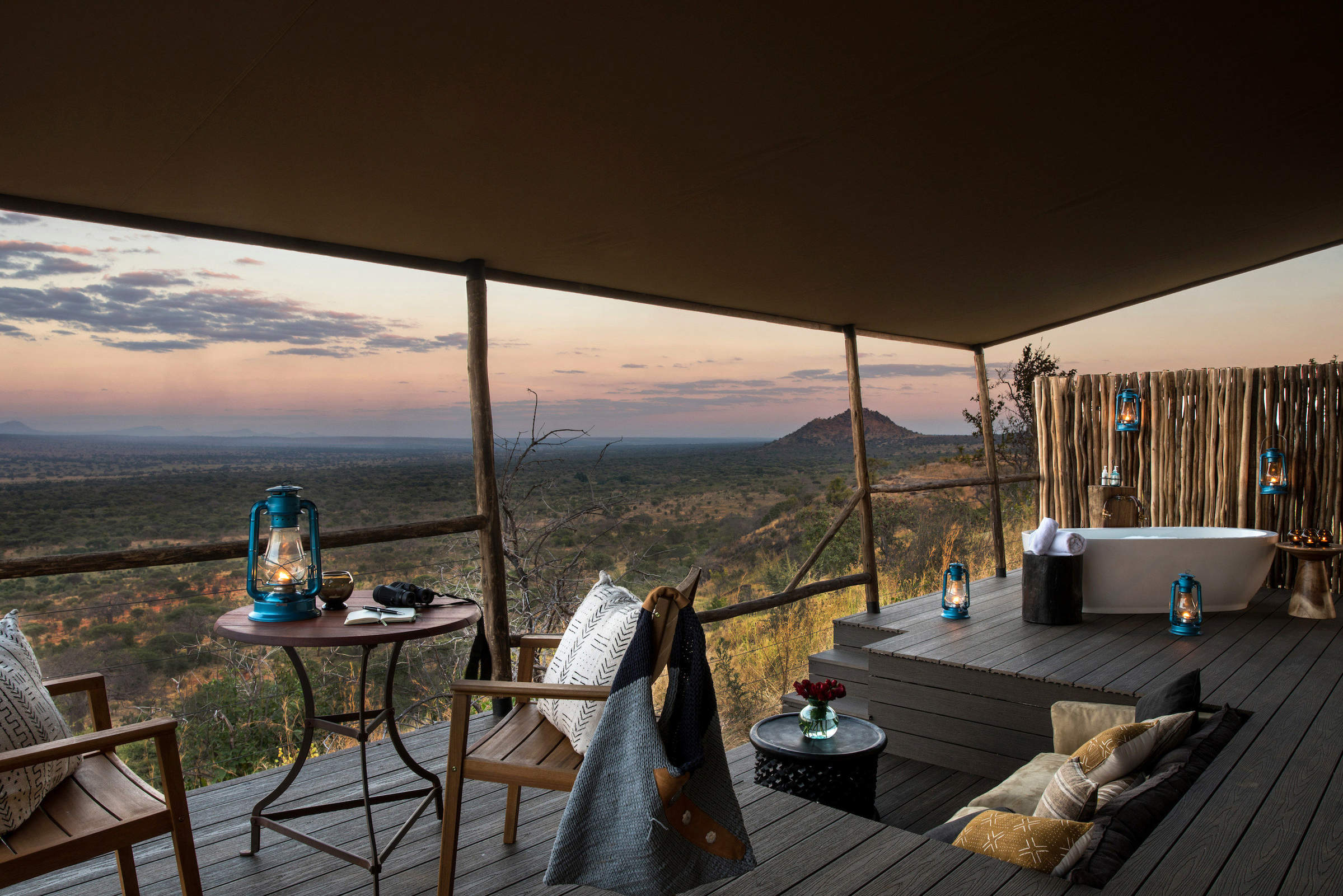
Lemala Mpingo Ridge
Lemala Mpingo Ridge is a stylish camp in Tarangire National Park, with a beautiful location and elevated views over the park.
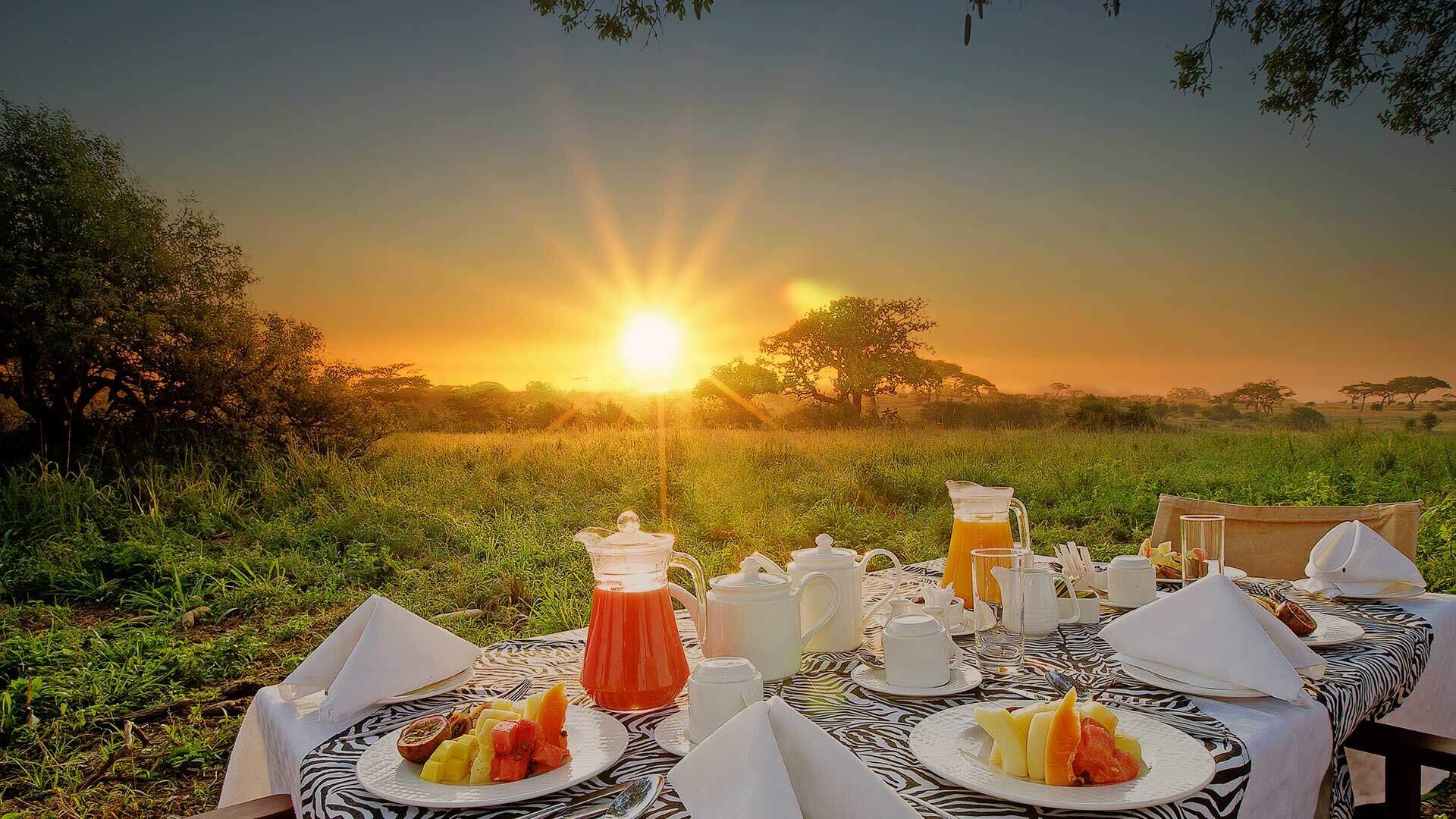
Tarangire Sopa Lodge
Tarangire Sopa Lodge is a large, comfortable, family-friendly hotel in Tarangire National Park, suitable for travellers on a budget.
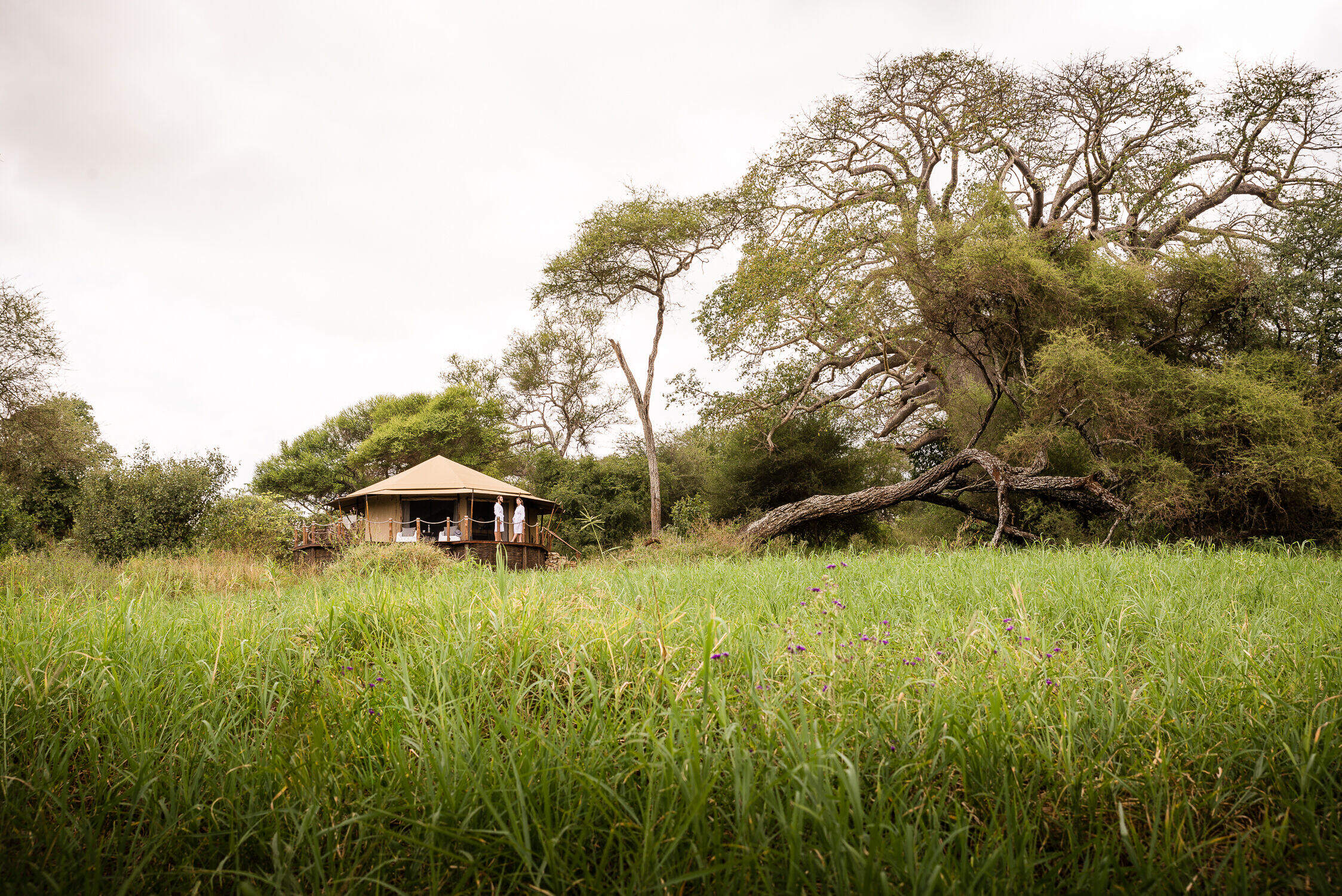
Swala Camp
Swala Camp is a stylish camp for exploring the southern Tarangire, either with a private driver-guide, or using the camp's vehicles and guides.

Tarangire Treetops
Tarangire Treetops is a lovely, high-quality lodge on the outskirts of Tarangire National Park, offering game drives, night drives and safari walks.
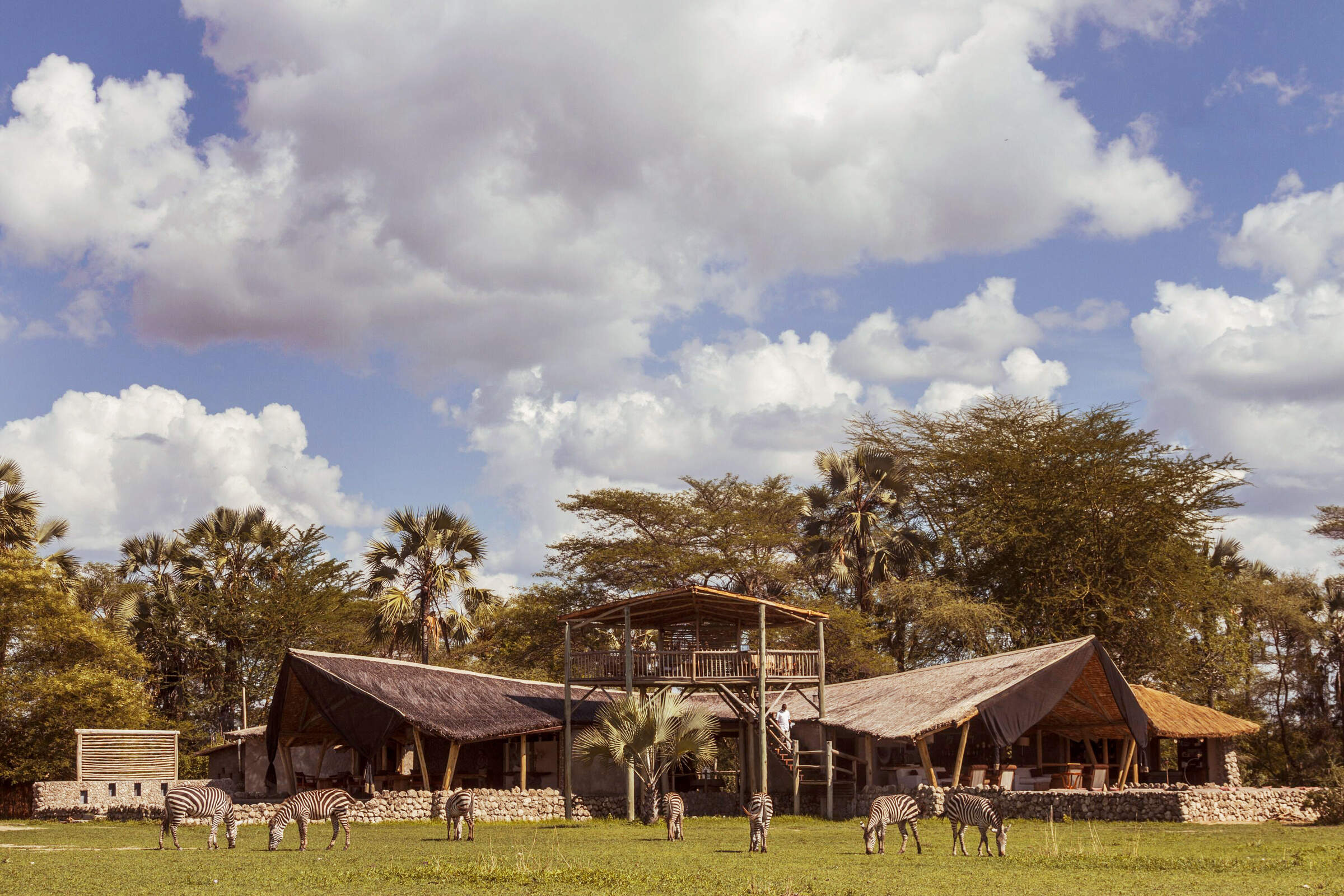
Chem Chem
Chem Chem is a luxury tented lodge on a private concession between Lake Manyara and Tarangire national parks.
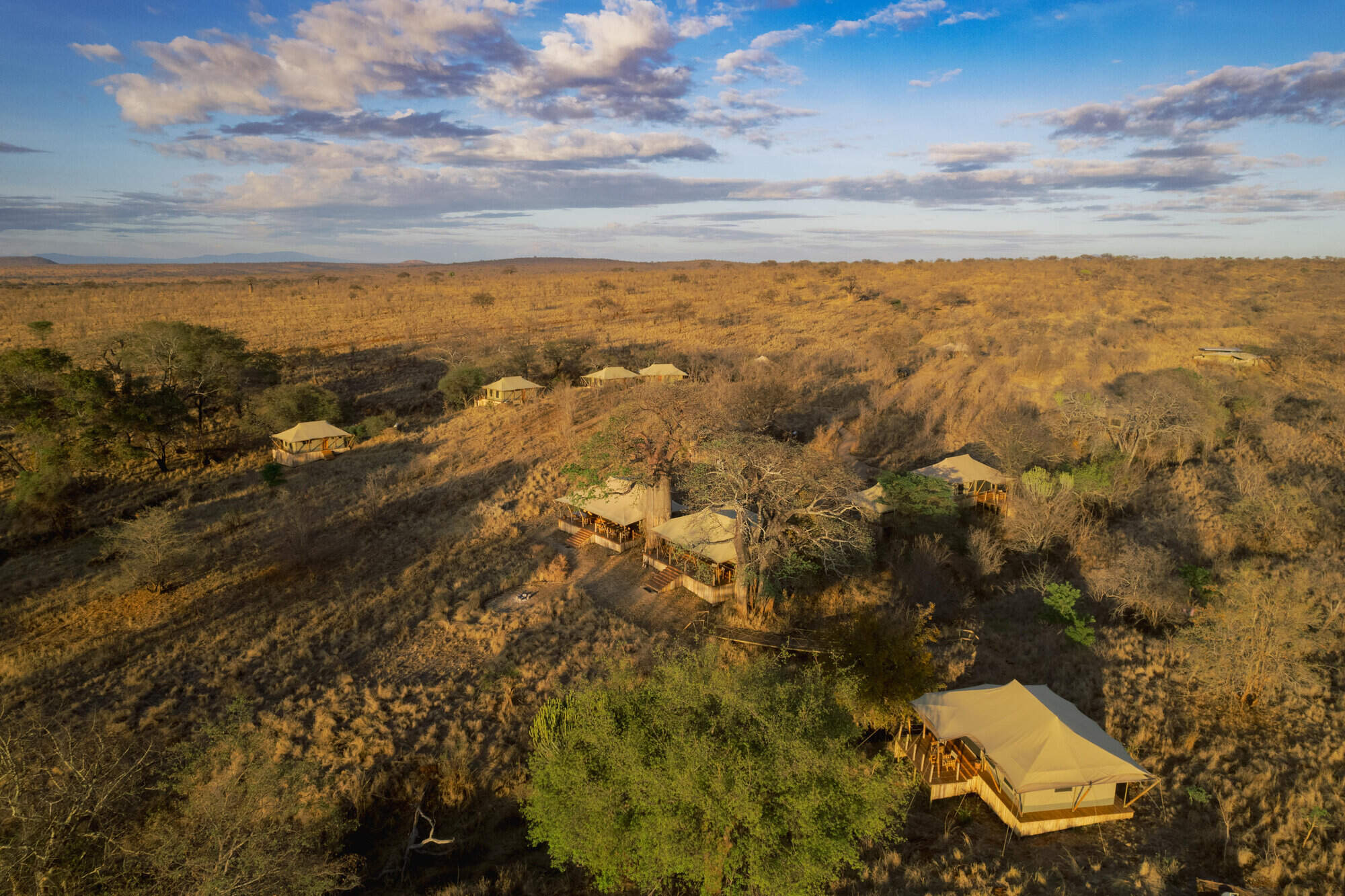
Olkeri Camp
Olkeri is a comfortable tented camp, located in the Randilen Wildlife Management area, bordering Tarangire National Park; ideal for those looking for pristine wilderness.
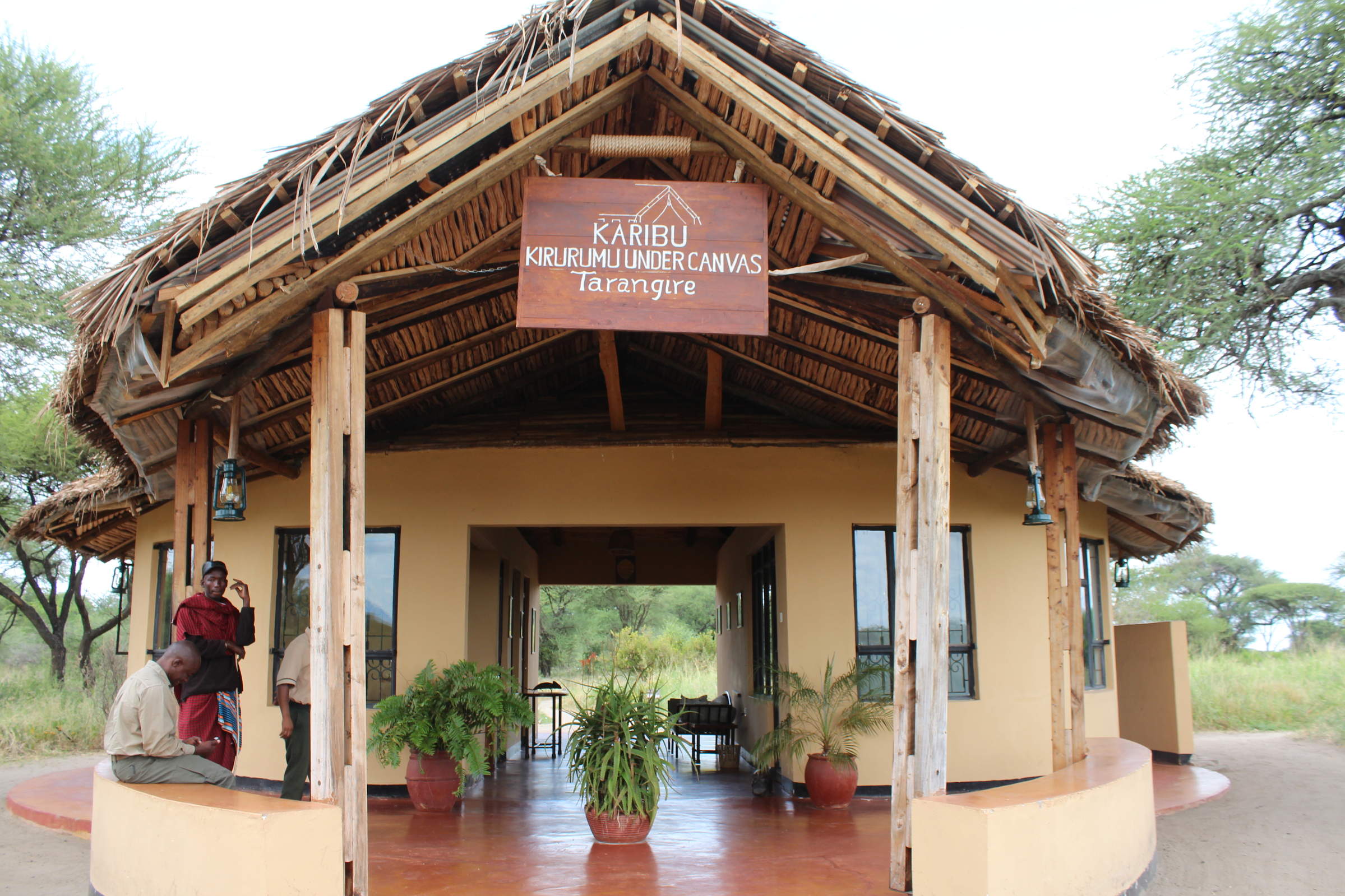
Kirurumu Tarangire
Kirurumu Tarangire Lodge is a simple, small, tented camp positioned just outside the northern boundary of Tarangire National Park.
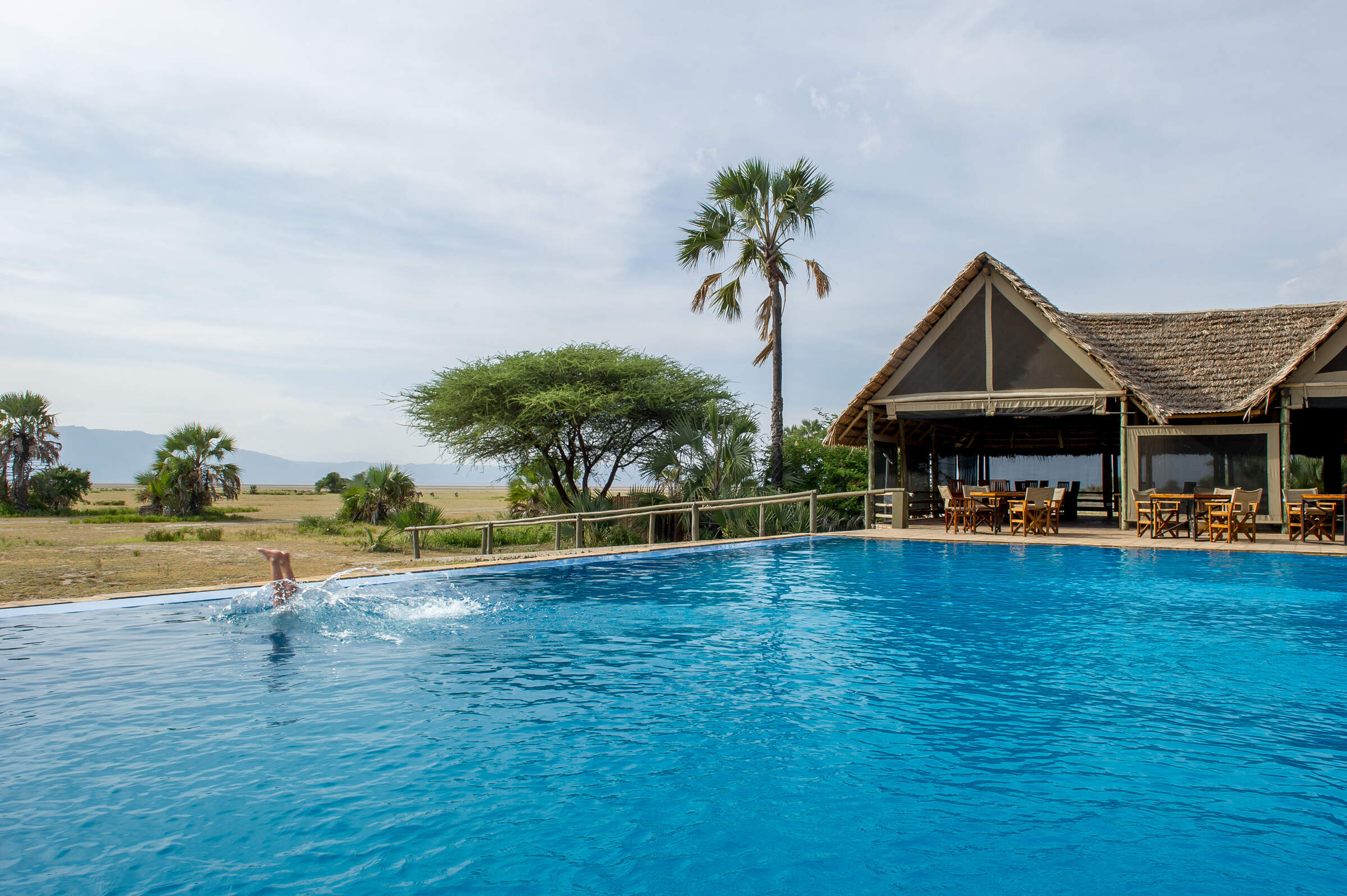
Maramboi Tented Camp
Maramboi Tented Camp is a family-friendly tented lodge located between Lake Manyara and Tarangire National Park.
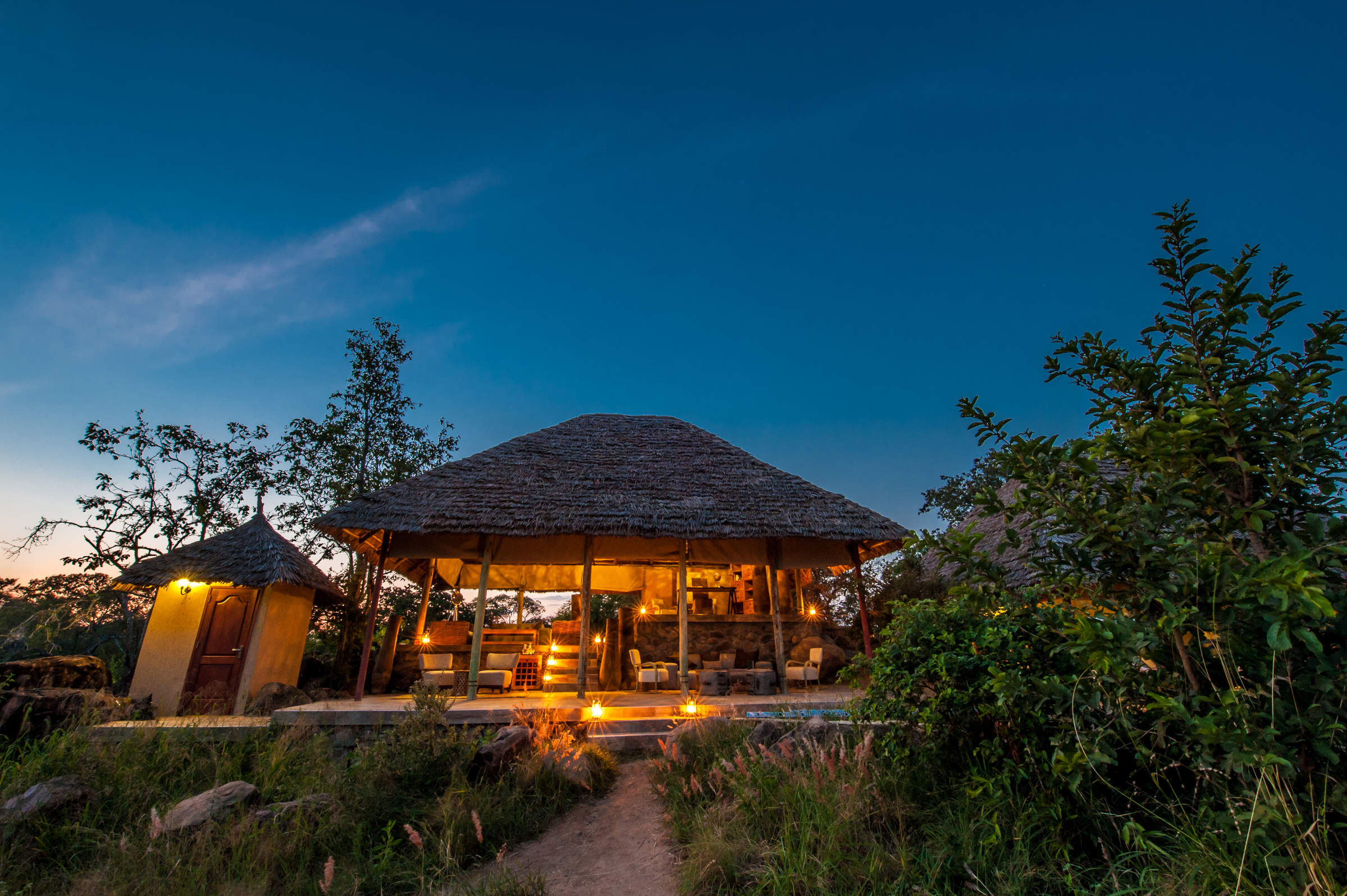
Nimali Tarangire
Nimali is a small camp built in contemporary style on the outskirts of Tarangire National Park in northern Tanzania.
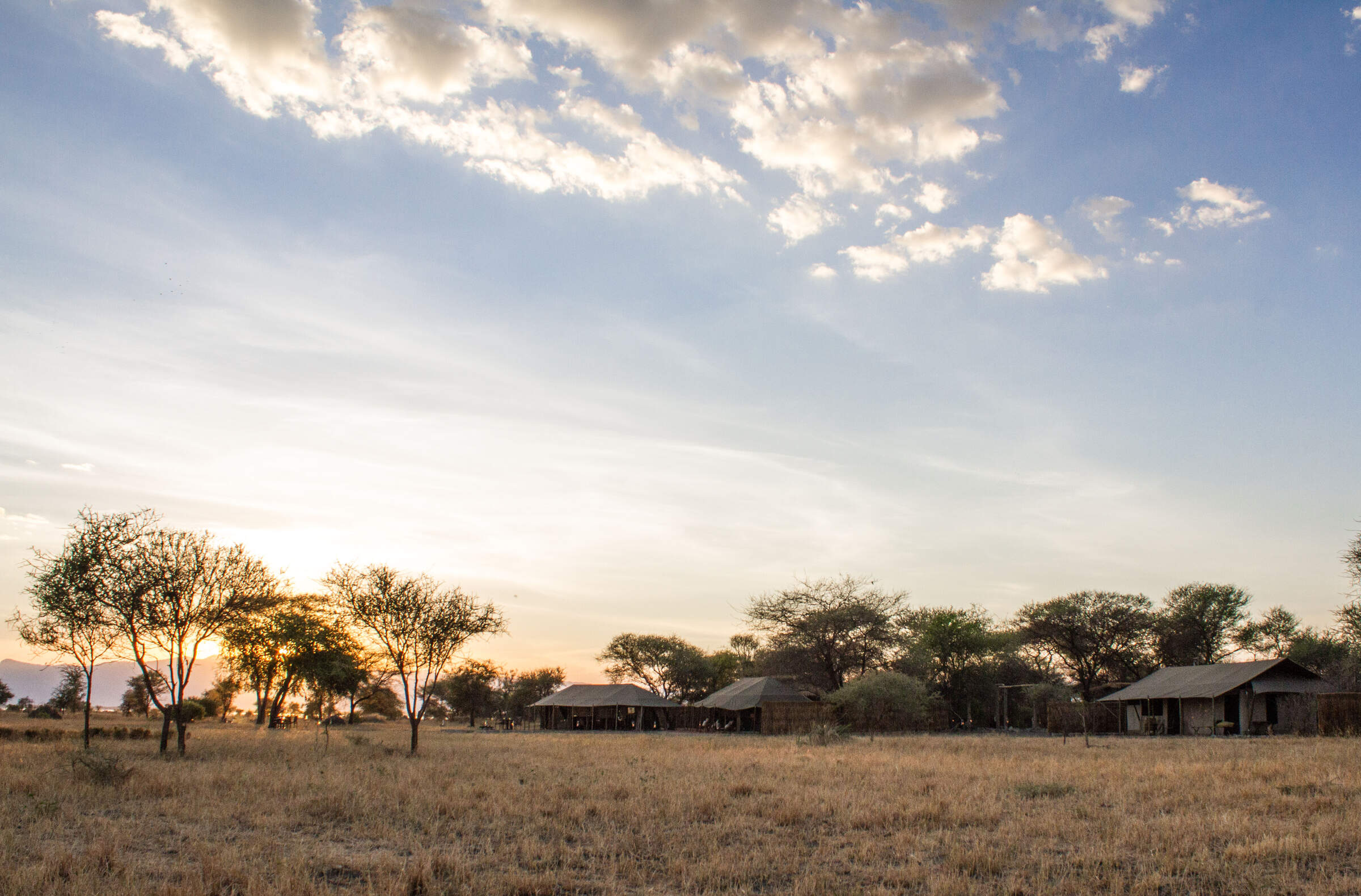
Little Chem Chem
Little Chem Chem is a stylish option near Tarangire National Park, offering real relaxation combined with a variety of safari activities.
When to go to Tarangire National Park
Our month by month guide: What it's like to visit Forest Chem Chem in Tarangire National Park
Jan
Feb
Mar
Apr
May
Jun
Jul
Aug
Sep
Oct
Nov
Dec
Tarangire National Park in January
January marks the start of the short dry season. The Tarangire River becomes a crucial water source, attracting diverse wildlife. Elephants, buffaloes, and zebras congregate around the river and swamps. The iconic baobab trees stand out against the landscape, providing food and shelter for animals. Birdwatching is excellent as resident birds display breeding plumage and migrant species are present.
The Silale and Gurusi swamps teem with hippos and crocodiles. While the southern areas of the park may still be wet, the northern regions offer great game viewing. The Matete Woodlands provide opportunities to spot leopards and rare fringe-eared oryx antelopes. January can offer great value for visitors, with quieter park conditions and variable weather.
- Variable weather, dry or rainy periods
- Good for birding, many migrant species present
- Elephant herds gather near Tarangire River
- Lush landscapes ideal for photography
- Quieter after early January rush
Our view
A good time to visit, with pros & cons
Weather in January
Tarangire National Park in February
February in Tarangire National Park is one of the hottest months, with temperatures reaching around 33°C/91°F. The short dry season continues, making it an excellent time for wildlife viewing. The Tarangire River and surrounding swamps become focal points for animal activity. Large herds of elephants, numbering over 3,000, are a major attraction.
The north offers impressive vegetation and birdlife, including large flocks of red-billed quelea birds and various raptors. Birdwatchers will enjoy the park's 550+ species, with northern hemisphere migrants joining resident birds. February is lovely for ballooning, offering unique aerial views of the park's diverse landscapes and wildlife during the cooler morning hours.
- Hot and dry weather prevails
- Large elephant herds visible near water sources
- Excellent time for game drives and safaris
- Baobab trees stand out in dry landscape
- Park less crowded, better wildlife viewing
Our view
A very good time to visit
Weather in February
Tarangire National Park in March
As March arrives in Tarangire, the long rains begin, transforming the landscape. This is an important time for the park's famous baobab trees, which store water in their trunks. While game viewing becomes more challenging due to dispersing wildlife, it's an excellent time for photography as the scenery turns lush and green.
The Tarangire ecosystem, including granitic ridges and river valleys, offers stunning views of the Great Rift Valley. Birdwatching remains rewarding, especially in the swampy floodplains and woodlands. March remains challenging for guided walking safaris, as the vegetation is high and thick.
- Hot with increasing humidity before rains
- Wildlife viewing varies as rains approach
- Quiet park with lower visitor numbers
- Migratory birds still present in good numbers
- Balloon safaris offer stunning aerial views
Our view
A good time to visit, with pros & cons
Weather in March
Tarangire National Park in April
April is the wettest month in Tarangire, with an average of 250mm of rain. The park's landscape is at its lushest, with flowering plants attracting insects and smaller animals. While big game viewing is more challenging due to dense vegetation, it's an excellent time for photographers to capture the vibrant scenery. The Tarangire River and swamps swell, creating picturesque scenes.
Birdwatching remains exceptional, with over 550 species present in the park. Visitor numbers are low, providing a more intimate safari experience.
- Heavy rains with impressive thunderstorms
- Some camps closed due to weather conditions
- Lowest rates and very few other tourists
- Lush green landscape, but wildlife dispersed
- Birdwatching excellent for resident species
Our view
This is not a great time to visit
Weather in April
Tarangire National Park in May
As May progresses in Tarangire, the long rains begin to taper off. The park's diverse habitats, from woodlands to savannahs, are lush and green. While wildlife viewing can still be challenging due to high grass, patient observers may spot leopards in the Matete Woodlands. The swamps, including Silale and Gurusi, are full of water, attracting numerous bird species.
May is an excellent time for photography, with dramatic skies and verdant landscapes. The Tarangire ecosystem is at its most vibrant, showcasing the park's stunning biodiversity. Visitor numbers remain low, offering peaceful game drives. Cultural visits to nearby Maasai communities provide insights into local traditions and lifestyles.
- Rains continue, creating dramatic skies
- Quiet time to visit, avoiding crowds
- Park lush and green with high grass
- Wildlife more dispersed, fewer sightings
- Affordable rates for budget-conscious visitors
Our view
This is not a great time to visit
Weather in May
Tarangire National Park in June
June marks the beginning of the dry season in Tarangire. As the landscape starts to dry, wildlife begins to congregate around permanent water sources. The famous Tarangire River becomes a hub of animal activity, attracting diverse species. Elephant herds become more visible as they move towards reliable water supplies.
June is an excellent time for birdwatching, with over 550 species present in the park. The Lemiyon Triangle in the north offers impressive vegetation and birdlife. As the grass starts to shorten, game viewing improves, especially along the Birungi Circuit. June is lovely for balloon safaris, providing breathtaking views of the awakening landscape and wildlife below.
- Weather transitions from wet to dry
- Wildlife starts concentrating near water
- Park still green with some high grasses
- Visitor numbers increasing gradually
- Good value with shoulder season prices
Our view
A good time to visit, with pros & cons
Weather in June
Tarangire National Park in July
July is a prime month for wildlife viewing in Tarangire. As the dry season progresses, large herds of elephants, buffaloes and zebras gather around the Tarangire River and swamps. The park's famous baobab trees stand out against the increasingly arid landscape. Game drives along the Birungi Circuit offer excellent opportunities to spot lesser kudu and massive elands.
Birdwatching remains rewarding, especially around the park's swamps and woodlands. The Matete Woodlands provide good chances to see leopards and rare fringe-eared oryx antelopes. July is perfect for photography, with clear skies and animals congregating at water sources. Guided nature walks provide intimate encounters with the park's flora and fauna. Sundowner game drives offer magical experiences as the African sun sets over the savannah.
- Dry season begins, excellent wildlife viewing
- Large elephant herds visible near river
- Popular time with higher visitor numbers
- Peak prices due to optimal conditions
- Guided walks offer intimate wildlife experiences
Our view
Fantastic: the very best time to visit
Weather in July
Tarangire National Park in August
August in Tarangire offers exceptional wildlife viewing opportunities. The dry season is in full swing, concentrating animals around the Tarangire River and remaining water sources. Large elephant herds, sometimes numbering in the hundreds, are a common sight. The park's swamps, including Silale and Gurusi, attract diverse wildlife.
Birdwatching is excellent, with many species gathering around water bodies. The iconic baobab trees provide a striking backdrop for photography. August is ideal for balloon safaris, offering panoramic views of the park's diverse landscapes and wildlife. Guided nature walks provide intimate encounters with the park's flora and fauna. Cultural visits to nearby Maasai communities offer insights into traditional lifestyles.
- Dry conditions, animals gather at water sources
- Excellent general wildlife viewing
- Busy season with higher visitor numbers
- Swamps attract diverse wildlife species
- Night drives reveal nocturnal animals
Our view
Fantastic: the very best time to visit
Weather in August
Tarangire National Park in September
September is an excellent month to visit Tarangire. As the dry season peaks, wildlife concentrates around remaining water sources, particularly the Tarangire River. Large herds of elephants, wildebeests, and zebras offer spectacular viewing opportunities. The Matete Woodlands and Birungi Circuit provide chances to spot predators like leopards. Birdwatching remains rewarding, with over 550 species in the park.
The landscape, dotted with iconic baobab trees, offers stunning photographic opportunities. September is ideal for guided walking safaris, allowing visitors to explore the park's ecosystem up close. Balloon safaris provide breathtaking aerial views of the parched landscape and congregating wildlife.
- Fantastic wildlife viewing opportunities
- Parks becoming very dry, animals congregate
- Slightly quieter than peak August period
- Baobab trees in full leaf, great for photos
- Higher chances of seeing large predators
Our view
Fantastic: the very best time to visit
Weather in September
Tarangire National Park in October
October in Tarangire marks the end of the dry season, offering some of the best wildlife viewing opportunities. The Tarangire River and surrounding swamps become crucial for survival, attracting large concentrations of animals. Elephant herds are particularly impressive during this time. The park's famous baobab trees stand out against the parched landscape. Birdwatching is excellent, with many species congregating around remaining water sources.
October is ideal for photography, with clear skies and abundant wildlife. Balloon safaris provide stunning aerial views of the park's varied landscapes and wildlife. As the month progresses, there's a chance of early rains, bringing new life to the park.
- Mostly dry with comfortable temperatures
- Excellent game viewing around water sources
- Lower visitor numbers than earlier months
- Balloon safaris offer breathtaking views
Our view
A very good time to visit
Weather in October
Tarangire National Park in November
November in Tarangire sees the start of the short rains, transforming the landscape. The famous baobab trees begin to flower, creating a lush backdrop. Wildlife starts to disperse as water becomes more widely available, but game viewing remains good. The Tarangire River and swamps continue to attract diverse species. November is excellent for birdwatching as migratory birds arrive, joining the park's 550+ resident species.
As the vegetation greens, photography opportunities abound. Guided nature walks provide insights into the park's changing ecosystem. Cultural visits to nearby Maasai communities offer unique experiences. November can offer great value with shoulder season rates and fewer visitors.
- Variable weather, chance of rain increasing
- Parks quieter, prices more affordable
- Wildlife disperses as rains begin
- Migratory birds start arriving in the park
- Green season begins, landscape transforms
Our view
A good time to visit, with pros & cons
Weather in November
Tarangire National Park in December
December in Tarangire brings a mix of wet and dry conditions. The short rains continue, rejuvenating the landscape. The famous baobab trees are in full leaf, providing shade and food for wildlife. While animals are more dispersed than in the dry season, game viewing remains rewarding. The Tarangire River and swamps continue to attract diverse species.
December is excellent for birdwatching, with migratory birds present alongside resident species. Balloon safaris provide stunning views of the greening landscape. Cultural visits to nearby communities offer insights into local holiday traditions. Despite being a popular time for visitors, especially during the festive season, December can still offer peaceful safari experiences in less-visited areas of the park.
- Variable weather, mix of dry and rainy days
- Good game viewing in Tarangire River area
- Quiet early month, busy during holidays
- Prices vary from low to peak holiday rates
- Lush landscapes after early rains
Our view
A good time to visit, with pros & cons
Weather in December

Looking for inspiration on where to travel next?
Visit our trip chooser to explore your options and find inspiration for your perfect African adventure
Inspire me